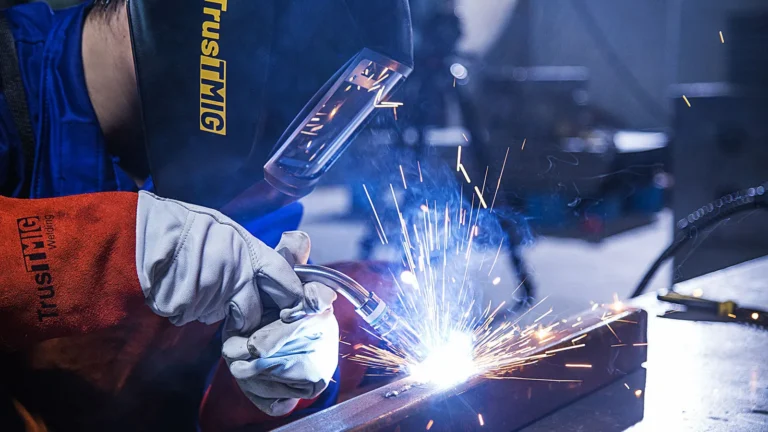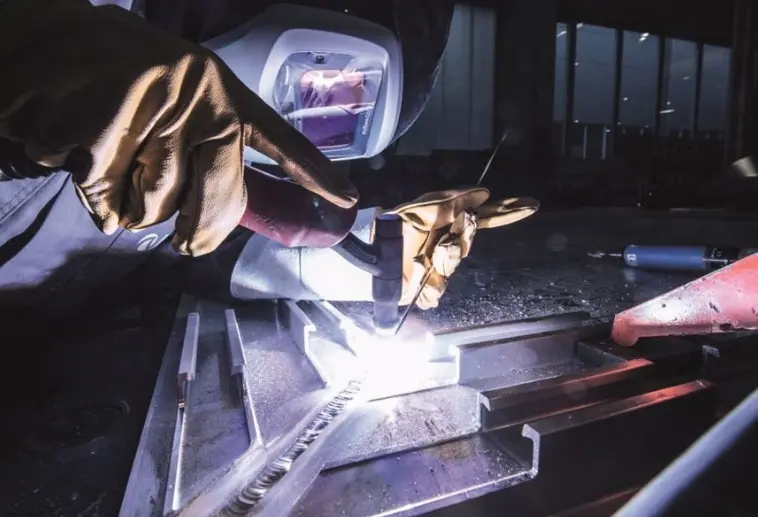The difference between TIG and MIG welding and their respective characteristics

TIG welding (tungsten arc welding) is a welding method that uses pure Ar as the protective gas and tungsten as the electrode. TIG welding wire is supplied in straight strips of a certain length (usually lm).
Advantage
Inert gas shielded arc welding uses pure tungsten or activated tungsten (thorium tungsten, cerium tungsten, zirconium tungsten, lanthanum tungsten) as a non-melting electrode. The arc between the tungsten electrode and the workpiece is used to melt the metal to form a weld. The tungsten electrode does not melt during the welding process and only functions as an electrode. At the same time, argon or helium gas is fed into the nozzle of the welding torch for protection. Additional metal can be added as needed. Internationally known as TIG welding


MIG welding is melting electrode inert gas shielded electric welding. It uses inert gases such as Ar as the main protective gas, including pure Ar or Ar gas mixed with a small amount of active gas (such as O2 below 2% or CO2 gas below 5%) for melting the electrode. Arc welding method of welding. MIG welding wire is supplied in rolls or coils in layers.
This welding method uses the arc burning between the continuously fed welding wire and the workpiece as the heat source. The gas ejected from the welding torch nozzle protects the arc for welding.
The shielding gases commonly used in gas metal arc welding include argon, helium, carbon dioxide or a mixture of these. When argon or helium is used as the shielding gas, it is called molten inert gas shielded arc welding (known internationally as MIG welding). When a mixture of inert gas and oxidizing gas (oxygen, carbon dioxide) is used as the shielding gas, or when a mixture of carbon dioxide gas or carbon dioxide + oxygen is used as the shielding gas, it is collectively called melting extremely active gas shielded arc welding (known internationally as for MAG welding).
The main advantage of gas metal arc welding is that it can easily weld in various positions, and it also has the advantages of faster welding speed and higher deposition rate. Molten extremely active gas shielded arc welding can be applied to the welding of most major metals, including carbon steel and alloy steel. Metal inert gas shielded arc welding is suitable for stainless steel, aluminum, magnesium, copper, titanium, pickaxe and nickel alloys. Arc spot welding can also be performed using this welding method.
Welding precautions
1. MIG welding
A. The appropriate protective gas flow rate is 20-25L/min;
B. The arc length is generally controlled at about 4-6mm;
C. The influence of wind is particularly detrimental to welding. When the wind speed is greater than 0.5m/s, windproof measures should be taken; pay attention to ventilation to avoid harm to the operator;
D. Using pulse arc current, a stable spray arc can be obtained, which is especially suitable for welding stainless steel, thin plates, vertical welding, and surfacing welding;
E, please use Ar+2% O2 gas combination to weld ultra-low carbon stainless steel, do not use Ar and CO2 mixed welding steel;
F. When welding, strictly remove oil, rust, and water impurities from the welding joint.
2. TIG welding
A. Shielding gas flow requirements: 7-12L/min when the welding current is between 100-200A; 12-15L/min is appropriate when the welding current is between 200-300A. Due to the damage of the air supply pipe, the protective gas is mixed with moist air, which has an impact on the performance of the welded joint;
B. The extension length of the tungsten electrode should be as short as possible relative to the nozzle, and the arc length should be generally controlled at 1-4mm (2-4mm when welding carbon steel; 1-3mm when welding low-alloy steel and stainless steel). ;
C. Windproof measures should be taken when the wind speed is greater than 1.0m/s; pay attention to ventilation to avoid harm to the operator;
D. When welding, strictly remove oil, rust, and water impurities from the welding joint.
E. It is recommended to use a DC power supply with steep dropout characteristics and tungsten as the positive electrode.
F. When welding low alloy steel with more than 1.25% Cr, the back side should also be protected.
Articles you may be interested in:
Different Welding Power Sources
Introduction To Welding Pad Process
How To Choose Industrial Water Chiller
The Important Role Of Welding Positioners
Introduction To 1G To 6G Welding Positions
Underwater Welding Salary And Death Rate
Introduction To Common Welding Techniques
MIG Welding Machine And Process Introduction
MMA Welding Machine Introduction And Process
Tig Welding Welding Machine And Process Introduction
Different Weldings Are Suitable For Different Welding Consumables


